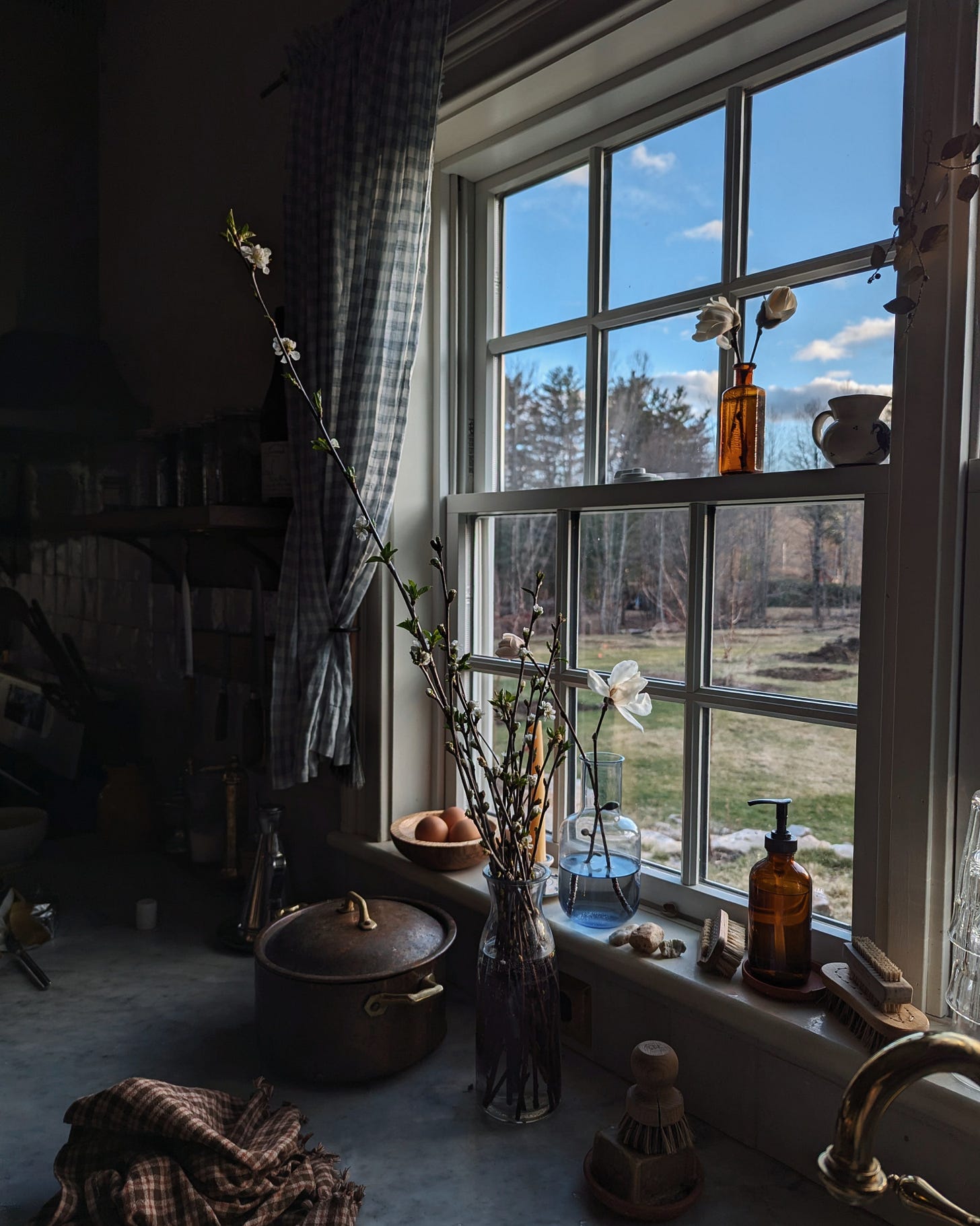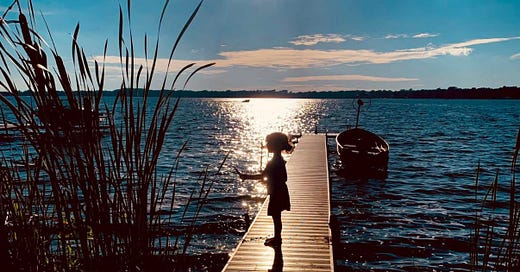Months ago, I read as someone scoffed at the photographs depicting the life of a man I admire, Simon Sarris. Simon is, like me, a father in New England who loves the natural world and appreciates beautiful things. He is a photographer and writer whose home and family seem to exist in a state of timeless, composed grace. The cynical detractor wrote something to the effect of “His life is only beautiful because he deliberately staged it that way,” as if that were a valid criticism. As though deliberateness, intention, design were somehow deceitful, or beauty less meaningful if it did not happen accidentally. I thought about that comment far more than I expected over the last few months, how it relates to the nature of beauty, and ultimately what makes something beautiful or at least memorable. Now, as my wife and I design packaging for the honey our bees will make this season, I find myself mulling it over in my mind yet again.

I want to make a world that is full of the work of magic for them, full of beautiful places to play and find each-other. This extends beyond roses of course, to the orchard, the meadows and streams, the barns I build, and all the hidden places those things create together. - Simon Sarris
When one looks at Simon’s photography, it is clear he puts a great deal of care into choosing two things: the material of every object in his home and the light that fills it. Look at the link there and note how the hardware of his cabinets match the brackets that hold up his shelves. This may seem simple but it does not happen by accident. I look at the door knobs in my own home I bought and note three different color metals in one room. Not exactly something to create discord, but it does not lend itself to beauty either. Note too how he does not drown his room in light. Someone remarked to me recently that their childhood feels so distant and alien, even the very light of rooms and buildings feels different. We discussed this for a bit and concluded that yes, the quality of bulbs has changed but also people just have a tendency to turn their lights on earlier, not allowing the soft glow of evening to catch the hair of their children or to gently spill shadows across the floor. There are many elements that make Simon Sarris’s photography beautiful, but ultimately for me, it comes down to intention.

We can look at a man’s life and analyze what makes a photograph of his beautiful, but it is likely a conversation that requires more than a paragraph in a Substack essay. Perhaps a doctoral thesis would be appropriate. Let’s look at something smaller then that also derives its beauty from intention. Consider this hang tag that came attached to a sweater I received recently from Kiel James Patrick. You could slap any hang tag on to a sweater, attach it with a bit of plastic, choose whatever font is default. Maybe add in some clip art of an anchor and check to see if its centered. It would pass but it wouldn’t be beautiful.
The string evokes ship rope. Kiel could have used jute twine or kite string but this particular string and the knots used reminds you of a rope tied to a dock, brings you back to a summer you spent as a kid at the Cape. The shape echoes the silhouette of a ship’s hull. The brass grommet makes the whole thing feel more durable, lasting. All these sensations transfer to the sweater itself and you’re left wondering if you should even through away the tag. Probably better to keep it as a bookmark for The Sea Wolf or Moby Dick.
Our own work is slow but satisfying. There are a hundred tiny decisions to make: the shape of the hang tags, the string that fastens them to the glass honey bottle, how the mailer boxes are cushioned with wood wool instead of bubble wrap. Every detail is a chance to say something about our little meadow, our family, our tradition. Every detail conveys what we value. I think about Simon and Kiel while I browse packaging and fiddle with print shop menus. I think about their choices. The fixtures in the home, the little details of the tag, the golden light.
It would be easy to dismiss Simon’s photographs as staged or Kiel’s work as overly affected.
And of course, they are staged, it is affected. But that’s the point. These are men who saw the world as it was, were not satisfied with what they beheld, and decided to make their own little corners of it more beautiful then when they arrived. They optimized for and prioritized photographability, aesthetics, beauty.
We are constantly curating our lives, whether we realize it or not. The music playing in the kitchen, the dishes on the table, the sweater in the drawer, the way we greet a loved one at the door…these are all just little moments. Over time though, they accumulate. They settle in, take root.
The moments compound.
A day is just a summation of moments. A life a summation of days. If we fill our moments with small, sincere acts of care, if we hang the tag with the right string, if we photograph the drawer with the matching fixture, if we set the table with candles on an ordinary night, we are not performing beauty.
We are creating it.






You have inspired me to curate beauty today through intention.
I want to commit acts of beauty.